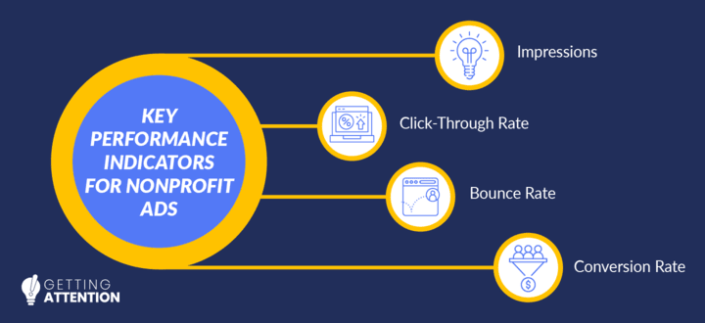Fundraising and marketing are intertwined. Think about it: donors need to know about your school’s fundraisers to participate. However, some marketing campaigns lead to greater boosts in donations than others.
Marketing success hinges on many factors, but fortunately, with a little research and the right tools, schools of any size can put together a marketing plan that engages donors. To get started, your school marketing team should be aware of a few core advertising components.
In this guide, we’ll walk through essential marketing campaign elements to help your school present itself professionally, connect with donors, and stay organized throughout the fundraiser.
1. Consistent Brand Identity
All external communication a nonprofit sends should maintain a consistent brand identity. This is especially important for schools, which need to uphold their image to maintain their community’s trust.
As such, create a brand guide that contains instructions for designing various marketing materials to align with your school’s image. This can include straightforward directions about how to use brand elements. For example, various versions of your school’s logo might be used in different contexts. Meanwhile, including more in-depth guidelines will help with aspects like maintaining a professional tone in your school’s communications.
Make this guide accessible to everyone on your marketing team, so they can reference it whenever they draft new marketing materials. If you plan to work with a third party, such as an independent graphic designer, ensure they have a copy.
Need some help planning your next school auction?
2. Strong Storytelling
For your marketing campaign to raise money for your school, potential donors will need to be interested in and interact with your marketing messages. One key marketing strategy to pique interest is storytelling.
Marketing materials that tell a story provide a short narrative that donors will remember and become emotionally invested in. A few ways you can strengthen the impact of your stories include:
- Using images and video. When it comes to digital marketing, many potential supporters likely aren’t interested in reading a thousand words before deciding to support a cause. Fortunately, a picture is worth a thousand words, and images and videos will pop out to individuals scrolling through text-based ads.
- Evoking emotion. Boring stories tend to go in one ear and out the other. What makes memorable stories stick with you is the emotional response they create. For your school, this means sharing stories that evoke emotions that urge them to donate, such as anecdotes from teachers about needing to purchase their own supplies to provide their students with a better education. Additionally, studies show that social media posts that invoke joy are the most widely shared.
- Sharing student and teacher stories. The stories you share with potential supporters should come from those most impacted by donations. For schools, this means interviewing students and teachers about their experiences and how whatever project your campaign is funding will impact them. If you are interviewing students, get their parents’ permission to feature them in your marketing campaign first.
To create strong marketing materials, assess your marketing team’s ability to design graphics, film videos, and write compelling copy. If your team lacks any of these skills, consider reaching out to third-party services who are willing to provide a discounted rate for a school. In some cases, you may even be able to get students to volunteer to create designs or help film videos.
3. Multi-Channel Strategy
To attract as many donors as possible, your school should take a multi-platform approach. This marketing method involves posting ads and marketing materials on several platforms to reach various audiences and create multiple touchpoints with the supporters who see your posts on different channels.
For schools specifically, a few communication channels to consider include:
- Social media. Especially for schools with students who are old enough to use social media, platforms like Facebook and Instagram are key marketing tools. In some cases, such as a sports team raising money for new equipment you may even be able to get students involved in marketing and have them use their accounts to reach their networks.
- Traditional mail. Letters in the mail and physical fliers are still important marketing channels for reaching your school’s core support base: students’ parents. Create flyers students can take home to share with their families or mail personal invitations encouraging them to come to your fundraising events.
- Businesses. Some schools may be able to form partnerships with local businesses to promote their fundraisers. 360MatchPro labels this “cause marketing” and provides a useful definition: “A collaboration between a for-profit business and a nonprofit organization to promote the nonprofit’s cause or mission.” When pitching this arrangement to a business, be sure to emphasize the benefits for them, such as associating their organization with a good cause and boosting their reputation.
When it comes to a multi-channel strategy, prioritize quality over quantity. If your marketing team can manage effective marketing campaigns on two channels or lackluster ones on five, it’s best to cut back to two.
4. Platform and Software Expertise
The better your school’s marketing team understands its chosen communication channels, the better your marketing campaign will perform. This applies to your own website and external communication channels like social media.
For example, you might launch a merchandise store on your website to sell branded t-shirts, mugs, and other merchandise. To maintain this store over time, updating sales items—such as by adding new photos, product descriptions, amounts in stock, and prices—should be as easy as possible. This way, any member of your team can make changes as needed.
If volunteers will use any of your software, plan to have an orientation walking them through it. This is especially crucial when students volunteer. For example, you might recruit students to participate in an online peer-to-peer fundraiser. As part of this campaign, you would teach them how to navigate your peer-to-peer fundraising software platform to set up their personal fundraising pages.
When making software investments, choose tools that are as user-friendly as possible. Additionally, look for software vendors that promise fast support and the ability to get in touch with their team.
5. Data Tracking
Your school’s website is one of your most important marketing assets. Throughout your campaign, use analytics tools such as Google Analytics to monitor donors’ interactions with your website. This is especially vital if you’re spending your school’s marketing money on ads.
Getting Attention’s guide to nonprofit marketing tools explains a few key performance indicators you can use to monitor the effectiveness of your ads:

- Impressions are the number of times your ad was viewed. Some social media websites will call this metric “views,” which is essentially the number of people your post was shown to, regardless of whether they clicked on it.
- Click-through rate is the percentage of people who saw your ad and clicked on it. If your click-through rate is high, most people who see your ad are interested in it. Use this metric to evaluate whether specific platforms and ads are actually driving traffic to your website.
- Bounce rate is the number of people who visit your website but then immediately leave. A high bounce rate indicates that your ads are somehow misleading or that your website is not meeting the expectations promised in your ads.
- Conversion rate is your most important metric. It represents the number of people who take an action, such as donating. For instance, if 2 out of every 10 people who saw your ad donated, your conversion rate would be 20%.
Each of these indicators is valuable depending on your goals. For example, if your school just wants to raise awareness or reach a wider audience, you may focus on platforms that will provide the highest number of impressions. In contrast, if you’re looking to fundraise, conversions are the be-all and end-all.
Create Auction Experiences That Keep Guests Coming Back for More
SchoolAuction.net has the tools to meet all your auction needs.
With the basics in mind, your school can begin planning a marketing campaign with materials that effectively represent your school, encourage donor involvement, and will be shared across various platforms. Throughout your entire campaign, keep an eye on your data to determine if your approach is bringing in positive results or if you need to redirect course.




